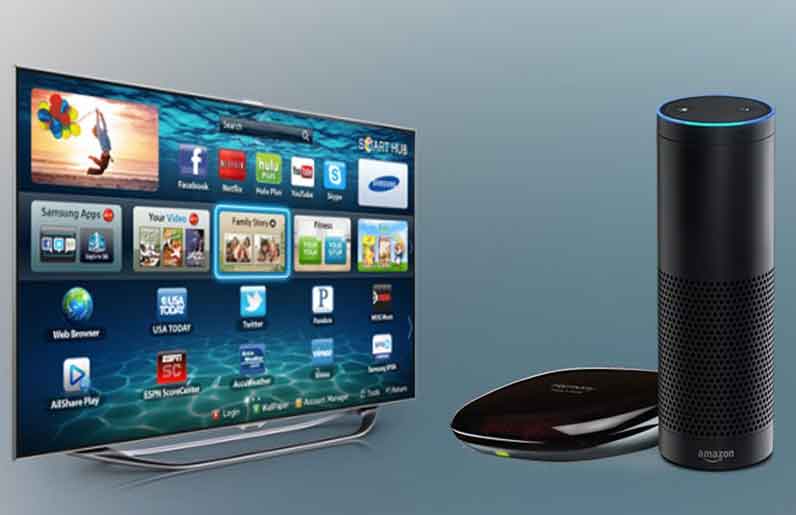Microphone issues can be frustrating, especially when you need to use your computer for virtual meetings, online conferences, or gaming. Whether you’re using Windows 10 or the new Windows 11, there are several troubleshooting methods you can try to fix microphone problems. In this comprehensive guide, we will explore the most effective solutions to get your microphone working again. From checking hardware connections to updating drivers and adjusting settings, we’ll cover everything you need to know to resolve microphone issues on your Windows device.
Common Causes of Microphone Not Working Error
Before diving into the troubleshooting methods, it’s important to understand the common causes of microphone issues in Windows 10 and Windows 11. By identifying the root cause, you can effectively address the problem. Here are some possible reasons why your microphone may not be working:
- Faulty hardware: A faulty microphone or physical connection can prevent it from functioning properly.
- Incorrect settings: Incorrect settings in Windows or specific applications can disable or block microphone access.
- Outdated or incompatible drivers: Outdated or incompatible audio drivers can cause conflicts and prevent the microphone from working.
- Audio input muted: The microphone or audio input may be muted in Windows or application settings.
- Malware or viruses: Malware or viruses can interfere with the microphone functionality.
- Exclusive mode enabled: Exclusive mode settings may prevent other applications from accessing the microphone.
- Incompatible or conflicting applications: Certain applications or software can conflict with the microphone functionality.
Now that we have identified the potential causes, let’s move on to the troubleshooting methods to fix microphone issues in Windows 10 and Windows 11.
Physical Checks and Troubleshooting Methods
Check Microphone Cable and Jack
Sometimes, microphone issues can be caused by physical problems such as loose connections or faulty cables. Before diving into software troubleshooting, it’s essential to check the microphone cable and jack. Here’s what you can do:
- Ensure that the microphone is properly connected to the correct jack on your computer.
- Check if the microphone cable is securely plugged in and not damaged.
- Try using the microphone with another device to rule out any hardware-related issues.
- If using a headset, make sure the microphone is not muted or turned down too low.
- Adjust your sitting position and ensure you’re not too far away from the microphone for optimal recording.
By checking the physical connections and ensuring everything is properly connected, you can eliminate any potential hardware-related problems.
Allow Microphone Access in Windows Settings
In Windows 10 and Windows 11, certain applications may require explicit permission to access the microphone. If microphone access is not granted, it can result in microphone issues. Here’s how to allow microphone access in Windows Settings:
- Press the Windows key + I to open the Windows Settings.
- Select Privacy & Security from the left pane.
- Choose Microphone from the options on the right side of the window.
- Turn on the toggle switch for Microphone access.
- Under Let apps access your microphone, ensure the toggle switch is turned on.
- Expand the Let apps access your microphone section and make sure the toggle switch for your targeted application is also turned on.
Alternatively, you can adjust microphone access settings in the Sound properties dialog. Follow these steps:
- Press the Windows key + R to open the Run dialog.
- Type mmsys.cpl in the text field and press Enter.
- In the Sound dialog, go to the Recording tab.
- Right-click on the microphone and choose Properties from the context menu.
- Go to the Advanced tab and uncheck the options under Exclusive Mode.
- Click Apply and OK to save the changes.
By allowing microphone access in Windows Settings, you can ensure that applications can use your microphone without any restrictions.
Run the Recording Audio Troubleshooter
Windows 10 and Windows 11 come with built-in troubleshooters to help diagnose and fix common issues. The Recording Audio troubleshooter can automatically scan your system for potential microphone problems and provide recommended fixes. Here’s how to run the troubleshooter:
- Open Windows Settings by pressing the Windows key + I.
- Choose System from the left pane.
- Select Troubleshoot on the right side of the window.
- Click on Other troubleshooters to access a list of available troubleshooters.
- Locate Recording Audio and click on the Run button next to it.
- After the initial scan, select the device you are having issues with and click Next.
- The troubleshooter will run another scan and, if necessary, recommend a fix. Click Apply this fix to proceed.
- Once the process is completed, restart your computer and check if the microphone issue is resolved.
Running the Recording Audio troubleshooter can help identify and fix common microphone problems, providing a convenient solution.
Reinstall Microphone Drivers
Outdated or faulty microphone drivers can often be the cause of microphone problems in Windows 10 and Windows 11. By reinstalling the microphone drivers, you can ensure that you have the latest and compatible drivers. Here’s how to update and reinstall microphone drivers:
- Type Device Manager in the Windows search bar and open it.
- In the Device Manager window, locate the Audio inputs and outputs section and expand it.
- Right-click on the targeted microphone device and choose Update driver from the context menu.
- Select Search automatically for drivers. Windows will scan your system for available driver updates. If any updates are found, install them and check if the microphone issue is resolved.
If updating the drivers doesn’t fix the problem, you can proceed with reinstalling the microphone device:
- Launch Device Manager and right-click on the targeted microphone device in the Audio inputs and outputs section.
- Choose Uninstall device from the context menu.
- In the confirmation dialog, uncheck the box associated with “Attempt to remove the driver for this device.”
- Click the Uninstall button to proceed.
- Once the device is uninstalled, click on the Scan hardware changes icon at the top. The system will detect the microphone and reinstall it.
By updating or reinstalling the microphone drivers, you can ensure compatibility and resolve any driver-related issues.
Restart the Windows Audio Service
Sometimes, the Windows Audio service, which is responsible for handling audio-related tasks, may encounter issues that affect microphone functionality. Restarting the Windows Audio service can help resolve these problems. Here’s how to do it:
- Open the Run dialog by pressing the Win key + R.
- Type services.msc in the Run dialog and click OK.
- In the Services window, locate Windows Audio and right-click on it.
- Choose Restart from the context menu.
- Close the Services window.
After restarting the Windows Audio service, check if your microphone is working properly.
Software Checks and Settings Adjustments
Check App Permissions and Settings
In addition to allowing microphone access in Windows Settings, it’s important to check the specific permissions and settings for individual applications. Some applications may have their own audio input options that need to be configured correctly. Here’s how to check app permissions and settings:
- Open the application you want to use the microphone with.
- Look for the settings menu or options related to audio input or microphone.
- Ensure that the correct microphone is selected as the input device.
- Check if the microphone permissions are enabled within the application.
By adjusting the app permissions and settings, you can ensure that the microphone is correctly configured for specific applications.
Configure Microphone Settings in Control Panel
In addition to Windows Settings, you can also configure microphone settings through the Control Panel. This can be useful for fine-tuning and adjusting advanced microphone options. Here’s how to configure microphone settings in Control Panel:
- Press the Win key + R to open the Run dialog.
- Type control panel in the text field and click OK.
- In the Control Panel window, navigate to the Hardware and Sound section.
- Click on Sound.
- In the Sound dialog, go to the Recording tab.
- Right-click on the microphone you want to configure and choose Properties from the context menu.
- Adjust the microphone settings, such as volume levels and enhancements, in the Properties dialog.
- Click Apply and OK to save the changes.
By accessing the microphone settings in Control Panel, you can customize and optimize the microphone settings according to your preferences and requirements.
Update Windows and Drivers
Keeping your operating system and drivers up to date is essential for optimal performance and compatibility. Microsoft regularly releases updates that include bug fixes and improvements, which can help resolve microphone issues. Here’s how to update Windows and drivers:
- Open Windows Settings by pressing the Windows key + I.
- Select Windows Update from the left pane.
- Click on Check for updates to search for available updates.
- If updates are found, click Download and install to install them.
- Restart your computer if prompted to complete the installation.
Additionally, you can update the microphone drivers by following the previous instructions in the Reinstall Microphone Drivers section.
By keeping your Windows system and drivers up to date, you can ensure optimal performance and compatibility for your microphone.
Disable Exclusive Mode
Exclusive mode is a feature that allows applications to take exclusive control of the microphone, preventing other applications from accessing it simultaneously. Disabling exclusive mode can resolve conflicts and ensure proper microphone functionality. Here’s how to disable exclusive mode:
- Open the Sound properties dialog by following the steps mentioned in the Configure Microphone Settings in Control Panel section.
- Go to the Advanced tab.
- Uncheck the options under the Exclusive Mode section.
- Click Apply and OK to save the changes.
By disabling exclusive mode, you allow multiple applications to access the microphone simultaneously, avoiding conflicts and ensuring proper functionality.
Adjust Microphone Volume
Sometimes, the microphone volume may be set too low, resulting in low or inaudible sound. Adjusting the microphone volume can help improve the overall audio quality. Here’s how to adjust the microphone volume:
- Open the Sound properties dialog by following the steps mentioned in the Configure Microphone Settings in Control Panel section.
- Go to the Levels tab.
- Increase the microphone volume by moving the slider to the right.
- Test the microphone to ensure the volume is at an appropriate level.
By adjusting the microphone volume, you can ensure clear and audible sound during recordings, meetings, or gaming sessions.
Additional Tips and Troubleshooting Methods
Check for Hardware Compatibility
It’s important to ensure that your microphone is compatible with your Windows system. Incompatible hardware can cause microphone issues. Check the manufacturer’s specifications and compatibility requirements for your microphone model. If necessary, consider using a different microphone that is compatible with your Windows device.
Scan for Malware and Viruses
Malware or viruses can interfere with the proper functioning of your microphone. Perform a thorough scan of your system using reliable antivirus software to detect and remove any potential threats. Regularly updating your antivirus software and performing scans can help prevent and resolve microphone issues caused by malware or viruses.
Perform a System Restore
If you recently made changes to your Windows system settings or installed new software that may have caused microphone issues, performing a system restore can help revert your system to a previous state. System restore allows you to roll back your system to a point where the microphone was working properly. Follow the instructions provided by Microsoft to perform a system restore on your Windows device.
Contact Technical Support
If you have tried all the troubleshooting methods and your microphone still isn’t working, it may be time to contact technical support. Reach out to the manufacturer of your Windows device or the microphone manufacturer for further assistance. They can provide specialized guidance and support to resolve any hardware or software-related issues.
Frequently Asked Questions
Why is my microphone not working in Windows 10/11?
There can be various reasons for microphone issues, including faulty hardware, incorrect settings, outdated drivers, or conflicting applications. Refer to the earlier sections of this guide for detailed troubleshooting steps.
How do I test my microphone in Windows 10/11?
You can test your microphone in Windows 10/11 by accessing the Sound settings or Control Panel. Go to the Recording tab and speak into the microphone. If the volume levels respond and you can hear your voice, your microphone is working properly.
Can I use a smartphone as a microphone on Windows 10/11?
Yes, you can use your smartphone as a microphone on Windows 10/11. There are various apps available that allow you to connect your smartphone to your Windows device and use it as a microphone.
Why is my microphone volume too low in Windows 10/11?
The microphone volume may be set too low in the Windows settings. Adjust the microphone volume by following the steps mentioned in the Adjust Microphone Volume section of this guide.
Is there a microphone troubleshooting tool in Windows 10/11?
Yes, Windows 10/11 has built-in troubleshooters, including the Recording Audio troubleshooter, which can help diagnose and fix microphone issues. Refer to the Run the Recording Audio Troubleshooter section for detailed instructions.
Conclusion
Microphone issues can be frustrating, but with the right troubleshooting methods, you can resolve them effectively. By checking hardware connections, adjusting settings, updating drivers, and running troubleshooters, you can fix microphone problems in Windows 10 and Windows 11. Remember to ensure microphone access, update your system and drivers, and adjust volume levels for optimal microphone performance. If all else fails, contact technical support for further assistance. With these solutions, you can get your microphone working again and enjoy seamless audio experiences on your Windows device.
Remember to stay up to date with the latest Windows updates and regularly check for driver updates to ensure the best performance and compatibility for your microphone.






